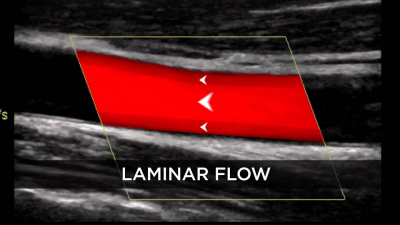Fetal ultrasound in the first, second and third trimesters
Ultrasound is a diagnostic imaging technique based on the emission of ultrasound (sound waves at high frequency) by a probe.
Below you have an index with all the points that we will discuss in this article.
Index- 1. What is an ultrasound?
- 2. Risks of fetal ultrasound
- 3. Types of ultrasound in pregnancy
- 4. First quarter
- 5. Second quarter
- 6. Third quarter
- 7. Authors and collaborators
What is an ultrasound?
Ultrasound penetrates the organ to be studied, in this case in the fetus, and through various physical phenomena such as reflection, a part of these ultrasound is transformed into electrical signals that appear on the screen of the ultrasound in the form of images. To facilitate the passage of ultrasound through the skin, an aqueous gel is used.
Ultrasound during pregnancyThe main ultrasounds are performed in weeks 12, 20 and 32 of pregnancy. Each of them is done in a different way since its purpose is different. It is possible that additional ultrasounds are performed in specific cases in which there are possible complications that force the gynecologist to perform more ultrasound controls.
Fetal ultrasound risks
Ultrasound is not harmful to either the mother or the fetus, but quite the opposite, since:
- It helps to observe the development of the fetus inside the maternal womb.
- It facilitates the diagnosis of malformations in the fetus.
Despite these benefits, it is important to be clear that a normal ultrasound does not always mean that the fetus is normal, since there are abnormalities and malformations in the fetus that are not visible through the ultrasound.
According to various scientific studies, with ultrasound we can detect 60% of fetal malformations and 75% of fetuses affected by trisomy of chromosome 21 (Down syndrome). There are biochemical analyzes (triple test) that also help detect this type of malformations and corroborate the diagnosis.

Types of ultrasound in pregnancy
Usually the gynecologist performed the traditional ultrasound, that is, in two dimensions (2D).
Ultrasound exams during pregnancyHowever, the novel imaging system has given rise to new types of ultrasound that are displacing the traditional image in two dimensions:
- 3D ultrasound: the classic 2D image is added fetal volume and color which allows a clearer and sharper image of fetal structures.
- 4D ultrasound: in addition to seeing the fetus in three dimensions, this type of ultrasound offers a fourth dimension: the movement of the fetus in real time. This allows you to get an idea of the baby's motor ability as well as his general behavior and response to stimuli.
Assisted reproduction, like any medical treatment, requires that you trust the professionalism of the doctors and clinic you choose. Logically, not all are equal.
This "tool" will select the clinics closest to you that meet our rigorous quality criteria and send you information about your budgets and conditions. It also includes tips that will be very useful when making the first visits to clinics.
This is the classification in terms of the type of image obtained. It is also possible to distinguish two types of ultrasound depending on the area through which the image is obtained:
- Transvaginal ultrasound is performed during the first trimester of pregnancy and although it is more uncomfortable than the abdominal one, it allows us to obtain images with higher resolution.
- Abdominal ultrasound will be performed during the second and third trimesters of pregnancy. To obtain clear images it is advisable to have a full bladder, so the gynecologist may advise you to drink water before going to the consultation.
Comments
Post a Comment